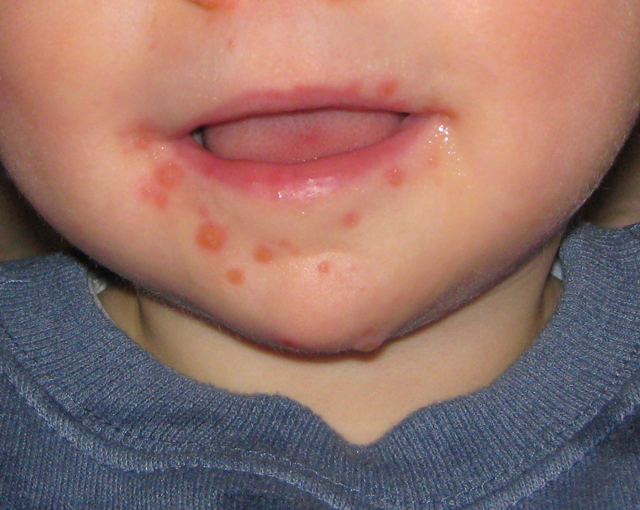We are starting to see more local cases of Hand, Foot and Mouth disease, a viral illness usually caused by a virus called Coxsackie. Typically, summer and fall are the seasons in which we tend to see more Hand, Foot and Mouth disease. Several years ago, a more severe form of Coxsackie started showing up in various locations around the U.S, and this new variant was identified as "Coxsackie A6".
In the past, Coxsackie A6 patients with Hand, Foot and Mouth disease tended to be sicker and younger (63% less than 2 years old), with some children needing to be hospitalized. The classic rash of Hand, Foot and Mouth tends to be pink or red vesicles on the sides of fingers, hands, toes and feet. The hands are involved more often than the feet. Some children will have small red dots and vesicles on the back of their throat lateral to the tonsils or on the back of the palate.
The current cases we are seeing also have vesicles on the buttocks, lower legs and the perioral (around the mouth) area. These lesions around the mouth may be mistakenly diagnosed as impetigo (a bacterial skin infection).
Hand, Foot and Mouth disease is most common in children under the age of 5; in rare cases, older kids and adults can get it (I have seen parents and older school age children with cases in the last month). Most often, the disease is caused by coxsackie viruses, though a virus called enterovirus 71 can also cause a similar illness. In Asia, enterovirus 71 has caused a cluster of severe neurologic symptoms and encephalitis. Thankfully, what we see here in the U.S. is usually limited to rash and fever - sometimes the fever can be quite high.
Hand, Foot and Mouth disease has a short incubation period - usually about 4-6 days, and will resolve spontaneously in about a week. The virus is transmitted through contact with infected saliva, respiratory secretions, the skin vesicles themselves, or contact with stool of someone who has the infection.
You can prevent the spread of Hand, Foot and Mouth disease by:
covering coughs, washing hands often (especially after changing diapers), disinfecting dirty surfaces, and avoiding close contact such as kissing and sharing eating utensils with infected persons.

